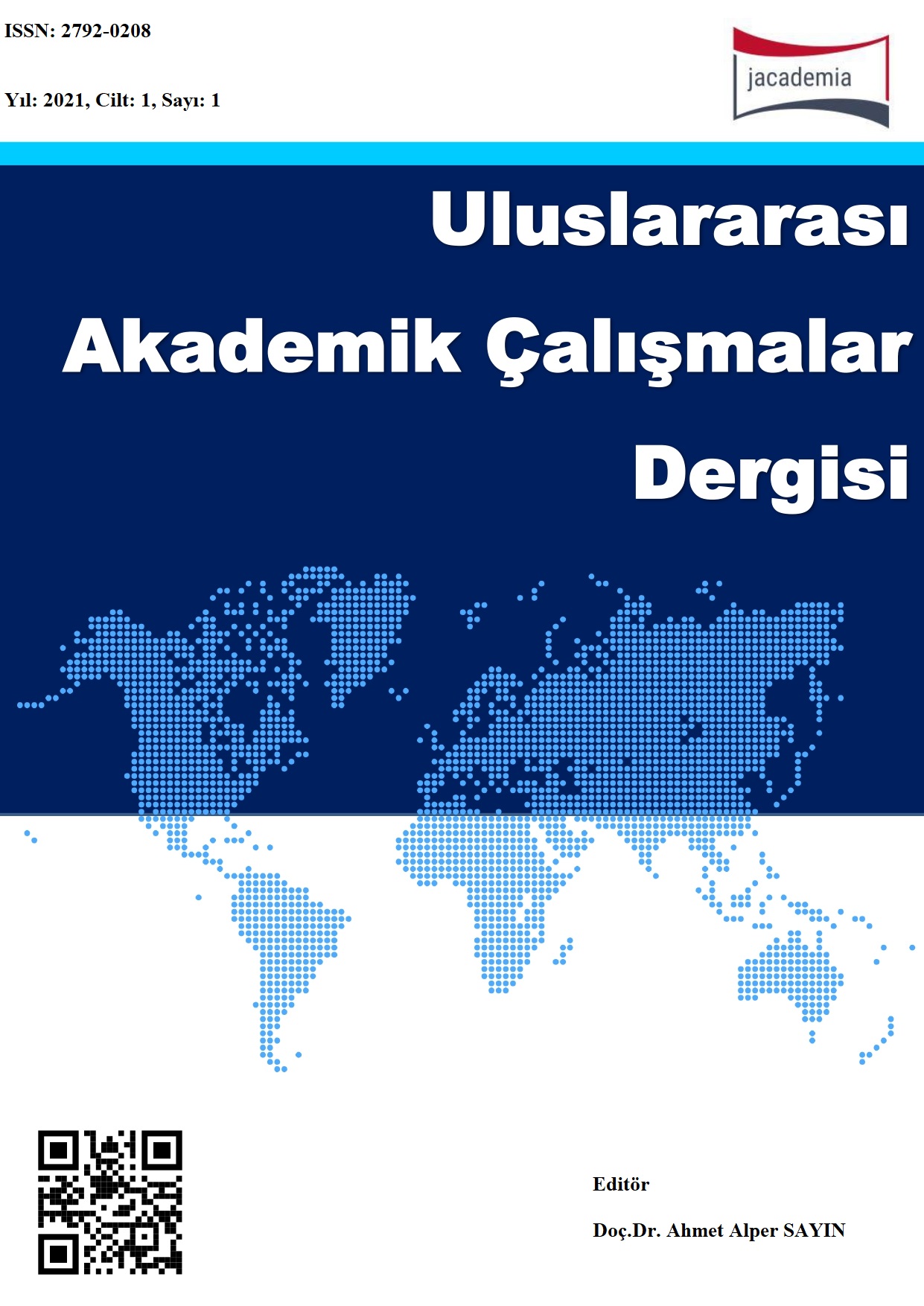A Study on the Relationship between Money Supply and Macroeconomic Variables in Some Selected Middle Eastern Countries
Author :
Abstract
Bu çalışma, para arzının dört ülke (Irak, Türkiye, İran ve Mısır) için, (1980-2019) dönemi esas alınarak, ekonomik büyüme üzerindeki etkisini analiz etmektedir. Bu araştırmada kullanılan veriler Veri Piyasası ve Dünya Bankası veri tabanlarından elde edilmiştir. Bu maksatla, bu çalışma için ARDL modeli kullanılmıştır. Çalışmada kullanılan verilerin normal dağıldığı açıklayıcı istatistiklerden anlaşılmaktadır. Veri özellikleri birim kök testi kullanılarak incelenmiştir ve tüm serilerin birinci düzeyde durağan olduğu görülmüştür. .Buna ek olarak, değişkenler arasındaki ilişkiyi test etmek için Johansen eşbütünleşme testi kullanılmıştır.
Uzun dönemli ilişki, hem LMS2L hem de LINVST'’nin küresel GSYH değişkeni ile uygun veya güçlü ilişkilere sahip olduğunu göstermektedir. Öte yandan, LMS2 ve LINVST GSYH üzerinde sırasıyla (0,88 ve 0,53) olumlu ve istatistiksel olarak anlamlı bir etkiye sahiptir. Daha açık bir şekilde, LMS2'nin %1 oranında değişmesi durumunda GSYH değerinin %0,88 oranında artması ve LINVST'nin %1 oranında artması GSYH’nın %0,53 oranında artmasına yol açacaktır. Bununla birlikte, IR, CPI, EX, ekonomik büyüme üzerinde olumsuz ve istatistiksel olarak önemli bir etkiye sahiptir. Oysa LMS2, LINVST'in bu ülkelerde ekonomik büyüme üzerinde olumlu ve istatistiksel olarak anlamlı bir etkisi vardır.
Keywords
Abstract
This study analysis the impact of money supply on the economic growth for four countries (Iraq, Turkey, Iran, and Egypt) for the time period of (1980 to 2019). In this research, data were obtained from the Data Market, World Development Indicator and World Bank databases. To achieve this objective, the ARDL model has been used for this study. Through applying the empirical determination process, the descriptive statistics show that the distribution of the sequence under investigation is normal. Sequences properties have been examined through utilizing unit root test, and all of the series were found to be integrated of order one. In addition, Johansen co-integration test was utilized to evaluate the long-run relationship between variables, and based on that, and results were found to be the long-run relationship among or between variables. Long run relation shows that both LMS2L, LINVST has proper or strong relations (positive) with the global GDP variable. On the other hand, LMS2 and LINVST have a positive and statistically significant effect on GDP which is (0.88 and 0.53) respectively. More clearly, in the case of changing LMS2 by 1%, GDP value rise by 0.88% and increasing LINVST by 1% will lead to raising GDP by 0.53%.
Nonetheless, IR, CPI, EX, has a negative and statistically significant impact on economic growth. At the same time, there is a positive and statistically significant impact of LMS2, LINVST on economic growth in those countries.
Keywords
- BARRO, R. (1997). Determinants Of Economic Growth A Cross-Country Empirical Study (No.
- BARRO, R. (1997). Determinants Of Economic Growth A Cross-Country Empirical Study (No. 294398). Harvard University, Kennedy School Of Government.
- CHAITIP, P., CHOKETHAWORN, K., CHAIBOONSRI, C. And KHOUNKHALAX, M. (2015).Money Supply Influencing On Economic Growth-Wide Phenomena Of AEC Open Region. Procedia Economics And Finance, 24, Pp.108-115.
- FELDSTEIN, M. And STOCK, J.H. (1994). The Use Of A Monetary Aggregate To Target Nominal GDP. In Monetary Policy (Pp. 7-69). The University Of Chicago Press.
- FRIEDMAN, M. (1970). A Theoretical Framework For Monetary Analysis. Journal Of Political Economy, 78(2), Pp.193-238.
- GEORGE, C., SUOYAI, E., TEMA, L. And BOLOEKEYE, M. (2018). Impact Of Money Supply On SomeMacroeconomic Variables On The Nigerian Economy. Journal Of Business Management And Economic Research, 2(5), Pp.32-46.
- KUNWAR, K.B. (2020). Money Supply And Economic Growth Of Nepal: ARDL Approach. Contemporary Research: An Interdisciplinary Academic Journal, 4(1), Pp.76-94.
- MAKINEN, G. (2003), Inflation Causes, Costs And Current Status, Report For Congress.
- NJIMANTED, F.G., AKUME, D. And MUKETE, E.M. (2016). The Impact Of Key Monetary Variables On The Economic Growth Of The CEMAC Zone. Expert Journal Of Economics, 4(2), Pp.54-67.
- NWANKWOEZE, I. (2010). The Impact Of Money Supply On Economic Growth In Nigeria. Available At: Https://Uniprojects.Net/Project.../Impact-Of-Money-Supply-On-Economic-Growth-In-Nig
- OGUNMUYIWA, M.S. And EKONE, A.F. (2010). Money Supply-Economic Growth Nexus In Nigeria. Journal Of Social Sciences, 22(3), Pp.199-204.
- OWOLABI, A. U. (2014). Money Supply, Foreign Exchange Regimes And Economic Growth In Nigeria. Research Journal Of Finance And Accounting, 5(8), 121-129.
- SULTAN, Z.A. And HAQUE, M.I., (2011). The Estimation Of The Cointegration Relationship Between
- SULTANA, N. (2018). Impacts Of Money Supply, Inflation Rate And Interest Rate On Economic Growth: A Case Of Bangladesh. Journal Of Emerging Technologies And Innovative Research, 66.
- VERMA, R. (2007). Savings, Investment And Growth In India: An Application Of The ARDL Bounds Testing Approach. South Asia Economic Journal, 8(1), Pp.87-98.
- VINAYAGATHASAN, T. (2013). Economic Growth And Monetary Policy In Asian Developing Economies (Doctoral Dissertation, 政策研究大学院大学/National Graduate Institute For Policy Studies).
- WUN, C. (2016). Analysis On Money Supply, Inflation Rate And Economic Growth Through Empirical Study.
